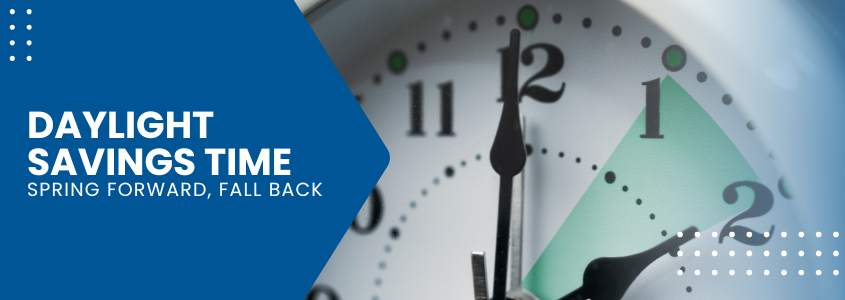Daylight Saving Time: Spring Forward, Fall Back
Twice a year, clocks across the United States change for Daylight Saving Time (DST)—a tradition that continues to spark both convenience and controversy. As we prepare to “spring forward” in March or “fall back” in November, it’s a great time to reflect on the history, purpose, and effects of this biannual time adjustment.
The History of Daylight Saving Time
Daylight Saving Time was first introduced during World War I to conserve energy by extending daylight hours. Germany was the first country to implement it in 1916, with the U.S. following suit in 1918. The practice was later standardized in the U.S. with the Uniform Time Act of 1966, although states can choose not to observe it (Arizona and Hawaii notably opt-out).
The idea behind DST is simple: adjust the clocks to make better use of daylight during the longer days of spring and summer, potentially saving energy and promoting outdoor activities.
When Does Daylight Saving Time Begin and End?
Spring Forward: Clocks are set ahead by one hour on the second Sunday in March at 2:00 a.m. local time.
Fall Back: Clocks are set back by one hour on the first Sunday in November at 2:00 a.m. local time.
For 2025:
- Daylight Saving Time begins on March 9, 2025.
- Daylight Saving Time ends on November 2, 2025.
Benefits of Daylight Saving Time
- Energy Conservation: By aligning waking hours with daylight, there’s less reliance on artificial lighting and heating, especially in the evening.
- More Daylight for Activities: Longer evenings encourage outdoor recreation, shopping, and tourism.
- Reduced Traffic Accidents: Some studies suggest that more daylight during peak traffic times can reduce accidents.
Drawbacks and Challenges
- Health Effects: The shift in time can disrupt sleep patterns, leading to fatigue, reduced productivity, and even an increased risk of heart attacks and strokes in the days following the change.
- Limited Energy Savings: Critics argue that modern energy usage patterns (e.g., air conditioning) have reduced the potential savings originally intended by DST.
- Global Inconsistencies: Not all countries or states observe DST, creating confusion for travelers and businesses.
Tips to Adjust to Daylight Saving Time
- Gradual Adjustment: A few days before the change, shift your bedtime and wake-up time by 15 minutes each day to help your body adapt.
- Prioritize Sleep: Stick to a consistent sleep schedule and create a relaxing bedtime routine.
- Get Morning Sunlight: Exposure to natural light in the morning can help regulate your circadian rhythm.
- Limit Evening Screen Time: Reduce exposure to blue light from screens, which can interfere with melatonin production.
Spring Forward with a Fresh Perspective
Daylight Saving Time may have its pros and cons, but it’s also a great reminder of the changing seasons and the longer days ahead. As you reset your clocks, take a moment to embrace the opportunities that come with spring and summer—more daylight to explore, connect, and grow.


